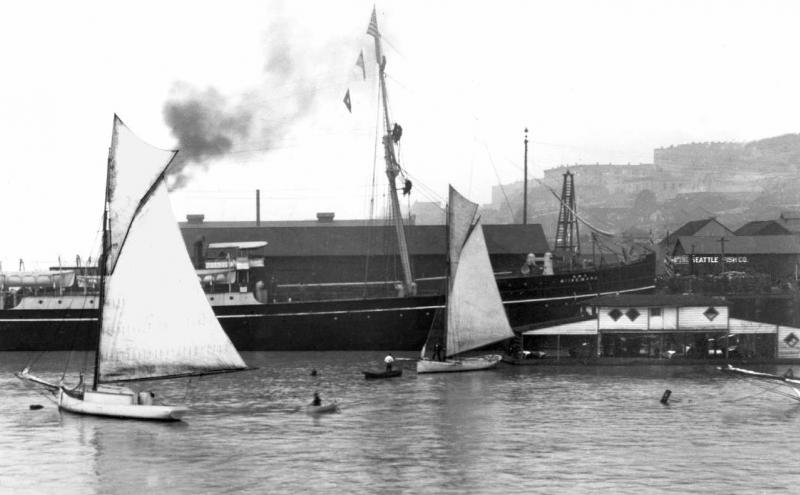
Imagine yourself on Seattle’s ramshackle waterfront on a warm August 31 afternoon in 1896. Scanning the horizon, you spot a dark shape rounding Magnolia Bluff and steaming into the deep waters of Elliott Bay. The black and white cargo steamer plows through the water towards you, and you spot a brilliant white flag with a bright red sun that waves proudly behind her. As the steamship gets closer to the finger piers on the waterfront, the peace of the Bay is broken — cannons roar in salute, church and fire bells clang, and bands play stirring numbers to the thousands of curious onlookers that have crowded the waterfront to welcome this visitor from far across the Pacific Ocean.
It’s hard to image today that the majority of the city would show up to watch a cargo ship tie up at one of Seattle’s waterfront piers, but that is exactly what happened nearly 120 years ago, and for good reason. August 31, 1896 is an auspicious day for Seattle and Washington State. The people of Seattle realized that the future had arrived, for Seattle’s birth as a global gateway became a reality.
On that date the Miike Maru, of the Nippon Yusen Kaisha (NYK) Shipping Line launched the first regular cargo and passenger service between Japan and North America. Though there had been intermittent trade between Asia and the West Coast since the late 18th century, this was fundamentally different.
But it almost didn’t happen — NYK Line considered several ports along the west coast for their service including Portland, San Francisco, San Diego, and others. James J. Hill, the owner of the Great Northern Railway, the recently completed transcontinental railway with its terminus in Seattle, learned that San Diego was sure to be NYK’s choice. So he quickly sent an agent to Japan to extol the virtues of a more northerly port of entry.
Who knows whether it was the lobbying or the obvious advantages that the Pacific Northwest has over other West Coast ports — the closest U.S. ports to Asia by several days’ sailing, a strong maritime andindustrial base, natural deep water harbors, and easy access to markets and commodities. Seattle won the day and landed the service, and in true Seattle fashion we haven’t looked back since.
The Northwest remains a global gateway
Don’t think for a minute this is just a history lesson — over the last century the Ports of Puget Sound have remained major trading partners with Asia and Japan. For The Northwest Seaport Alliance, a joint operating agreement between the Ports of Seattle and Tacoma, Japan remains the second-largest trading partner with two-way trade valued at $17.4 billion. The total value of international two-way trade totaled $75.2 billion in 2017; of that total, imports accounted for $58.6 billion and exports $16.6 billion.
Top 5 Imports
- Industrial machinery
- Electronics
- Cars
- Furniture
- Toys and Games
Top 5 Exports
- Grains
- Industrial machinery
- Prepared fruits and vegetables
- Cereals
- Meat and meat products
A lot has changed since 1896. When the Miike Maru arrived, her hull was filled with individual bags or crates that had to be taken off the ship by large gangs of workers using technology that hadn’t changed significantly in hundreds of years. Visit the waterfront today and witness the radical change; steamships and crates have given way to massive cargo ships that dwarf the Space Needle and are stacked high with the ubiquitous and highly efficient intermodal cargo container.
Seattle is not just a global gateway on the water but also in the skies at Seattle-Tacoma International Airport. Sea-Tac serves both the Far East and Europe for passengers and cargo and is equidistant between Tokyo, Japan and London, England.
Another fun fact is that the NYK Line still calls the Puget Sound today. In 2016 they joined forces with the other Japanese steamship lines MOL and K Line forming the Ocean Network Express. When you’re on the waterfront keep an eye out and you’ll probably see containers emblazoned with the old NYK Line logos or the new brilliant fuschsia ONE containers. When you see them, remember that this region’s rise as a global gateway began on that August day with a simple ship carrying tea.
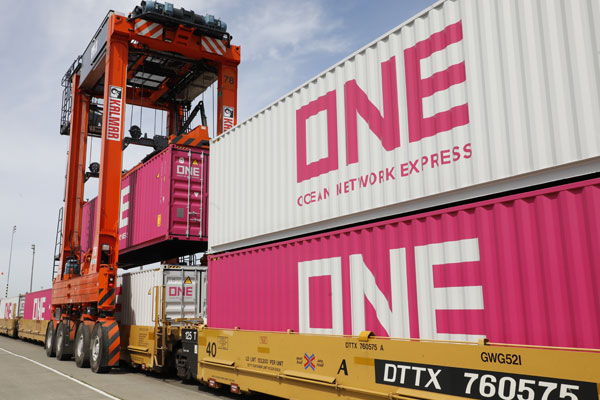
About the Miike Maru
A few stats about the Miike Maru
Owner: Nippon Yusen Kaisha (NYK) Shipping Line
Builder: Robert Thompson & Sons, Southwick England
Operated: 1888-1929
First Call to Seattle she carried: 488 tons of freight
- Inbound cargo: Teas, silk, camphor, curios, matting, soy oil, and paper
- Outbound cargo: lumber, flour, hardware, fish, leather, beer, wire, and tobacco
- 8 Passengers
- 253 Japanese immigrants
Ports of Call: Seattle, Yokohama, Kobe, Nagasaki, and Hong Kong
Later NKY vessels to join the trade route: the Yamaguchi Maru, Kinshui Maru, and Sakura Maru
For more information
If you are really interested in the Miike Maru you can visit a few sites on the Seattle Waterfront.
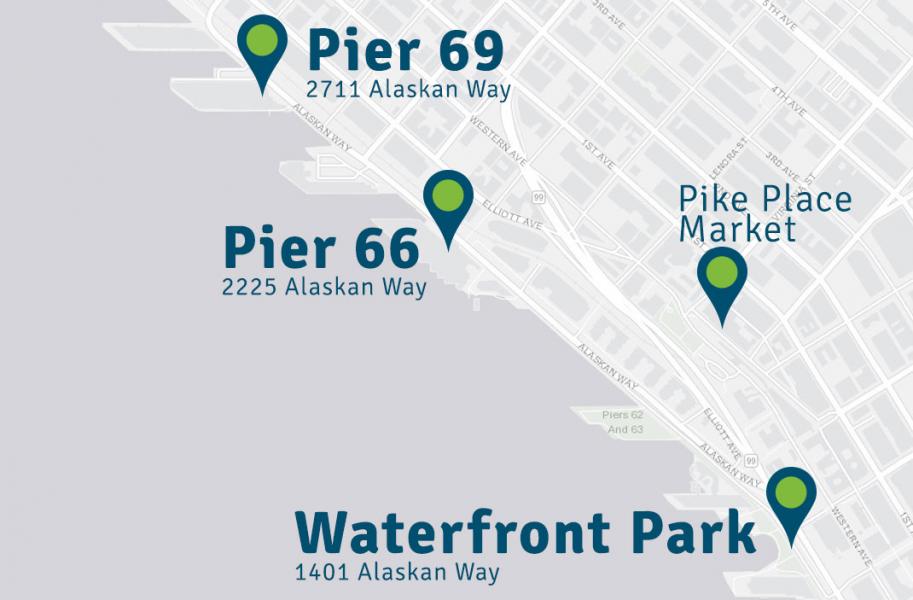
- Waterfront Park historic plaque
The Miike Maru tied up at Schwabacher Pier which was on the central waterfront. That pier burned down a few years later and today is the home of Waterfront Park, located between the Seattle Aquarium and the Great Wheel (Pier 57). While you’re deciding if you want to ride the wheel or see the seals, keep your weather eye open for the historic plaque commemorating the ship’s first visit.
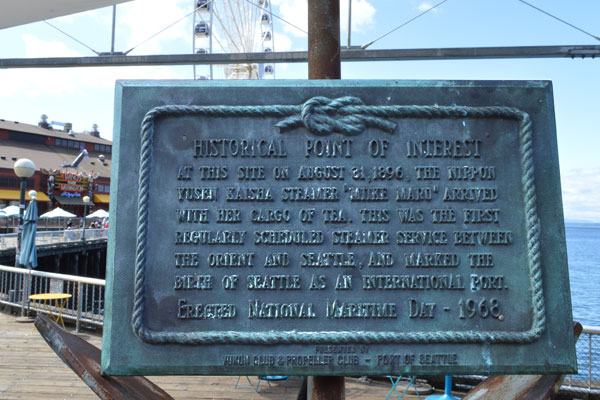
- Commemorative Cherry Trees
In front of Pier 66 (2225 Alaskan Way), the Port of Seattle’s Cruise Terminal are six cherry trees that were donated to the City of Seattle in 1996 by NYK on the centennial of the Miike Maru’s inaugural visit. The trees were planted to celebrate a century of trade. Come in spring an you can see their cherry blossoms.
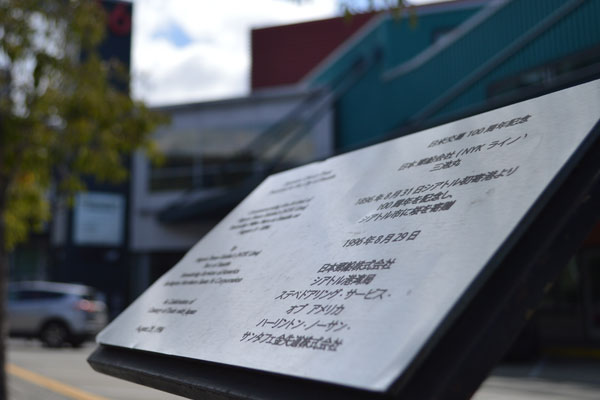
- Miike Maru ship model
If you’re curious about what the Miike Maru actually looked like, swing by the Port of Seattle headquarters and see a scale model of the ship in the Port of Seattle's lobby (2711 Alaskan Way). You can compare it to nearby models of cargo ships that call on the port today.
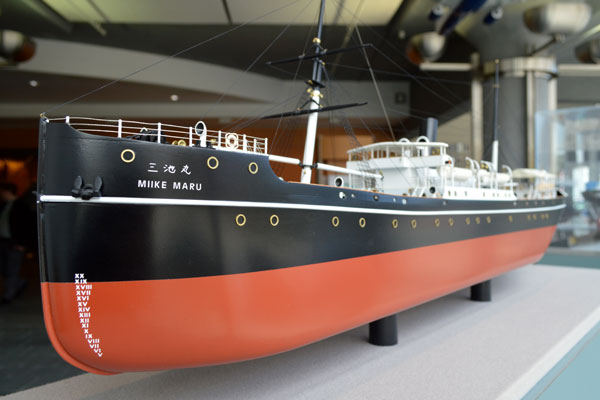
Main Photo Credit: MOHAI






